Murder on the streets of Toronto the good .. Harper’s crime agenda and the case of Bly Markis
May 3rd, 2007 | By Dominic Berry | Category: Crime Stories Years ago now I was walking up Yonge Street in Toronto with a few friends one night, after some serious discourse in a bar. On a street corner a few blocks south of the subway at Bloor we were very surprised to come across a strikingly beautiful and even well-dressed young woman, squatting on the sidewalk and begging for change.
Years ago now I was walking up Yonge Street in Toronto with a few friends one night, after some serious discourse in a bar. On a street corner a few blocks south of the subway at Bloor we were very surprised to come across a strikingly beautiful and even well-dressed young woman, squatting on the sidewalk and begging for change.
All this has come rushing back to me as I’ve read about the sad murder of the striking 33-year-old homeless lady Bly Markis, in “an underground stairwell at Yonge and Bloor streets,” on the evening of Saturday, April 28, 2007. This big city homicide also hit the news just when Canada’s Conservative minority government was “set … to focus on crime this week in Parliament.” But in the end America Junior’s Afghanistan variation on the great Iraq war debate in the USAÂ seminally blurred Prime Minister Harper’s crime agenda. Even so, the case of Bly Markis in Toronto may still have a few things to tell us about the state of law and order in Canada today.
An easy crime to solve … thanks to surveillance video?
 The case of Bly Markis is not exactly a great murder mystery. The Toronto press reported early on that “police say it’s only a matter of time until they figure out the name of the man wanted in connection with her murder thanks to surveillance video from both the Xerox building at 33 Bloor St. E., and the Yonge-Bloor TTC subway station.”
The case of Bly Markis is not exactly a great murder mystery. The Toronto press reported early on that “police say it’s only a matter of time until they figure out the name of the man wanted in connection with her murder thanks to surveillance video from both the Xerox building at 33 Bloor St. E., and the Yonge-Bloor TTC subway station.”
Ms. Markis and her alleged killer were “spotted by cameras entering the south side of the [Xerox] building, off Hayden St., around 10:30 p.m. Saturday [April 28]. They walked up a flight of stairs, through the Xerox building, and down an escalator that leads to the Yonge-Bloor subway station.” They then “disappeared from view when they walked down some stairs to an emergency exit in the basement, which is where Markis’ body was later found.”
 The “wanted man” was “picked up by cameras again about 20 minutes later,” walking “out the emergency exit back onto Hayden St.” He was “carrying … a bag investigators believe belonged to the dead woman.” The video showed him walking “back inside the Xerox building, through the same door he and Markis entered earlier, then exiting on the north side onto Bloor St.” He “was seen by TTC cameras soon after that,” entering “the Yonge-Bloor subway.” And he was “also seen talking on a cellphone and investigators say they may be able to track that call.”
The “wanted man” was “picked up by cameras again about 20 minutes later,” walking “out the emergency exit back onto Hayden St.” He was “carrying … a bag investigators believe belonged to the dead woman.” The video showed him walking “back inside the Xerox building, through the same door he and Markis entered earlier, then exiting on the north side onto Bloor St.” He “was seen by TTC cameras soon after that,” entering “the Yonge-Bloor subway.” And he was “also seen talking on a cellphone and investigators say they may be able to track that call.”
From here things moved very quickly. Early on Tuesday, May 1, 2007 “a man turned himself in to police in the company of his lawyer.” And one “Martin Horacio De Narvaez, 21” was “charged with first-degree murder.” More exactly: “the accused surrendered to police … after a family member saw surveillance images of the suspect on the news on Monday [April 30].” (Or, still more exactly from another source: “A relative of a man allegedly caught on security camera near where Bly Markis was found murdered recognized the face and helped convince the suspect to turn himself in … the relative first saw the picture on the internet, then later on television.”) And “Martin Horacio Denarvaez, an unemployed Greater Toronto Area resident,” appeared in court Tuesday afternoon, “charged with strangling 33-year-old Bly Markis.”
 According to current police thinking, “the victim and her killer had only met a short time before the slaying occurred overnight Saturday … There was not a lot of conversation prior to the murder. They met a short distance away from where she was discovered and the incident occurred very quickly,'” homicide detective Chris Buck told a press conference. As further reported by the media: “Markis’ body was found in a basement stairwell in the Xerox Centre building on Bloor Street near Yonge early Sunday morning … Investigators believe the two may have entered the building to do drugs and have sex.”
According to current police thinking, “the victim and her killer had only met a short time before the slaying occurred overnight Saturday … There was not a lot of conversation prior to the murder. They met a short distance away from where she was discovered and the incident occurred very quickly,'” homicide detective Chris Buck told a press conference. As further reported by the media: “Markis’ body was found in a basement stairwell in the Xerox Centre building on Bloor Street near Yonge early Sunday morning … Investigators believe the two may have entered the building to do drugs and have sex.”
Detective Buck also “praised the surveillance cameras for helping in the investigation.” Ironically enough, “Toronto police, meanwhile, switched on about a dozen surveillance cameras around the city on Monday [April 30] as part of a six-month pilot program,” funded by the public tax base.
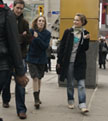 The “majority of the devices are watching over the entertainment district, while several cameras are in Scarborough’s Malvern community and the Jane and Finch area.” (All places some distance away from Yonge and Bloor, those familiar with Toronto might note, though some parts of that area are apparently already well served by the private sector and the TTC subway.)
The “majority of the devices are watching over the entertainment district, while several cameras are in Scarborough’s Malvern community and the Jane and Finch area.” (All places some distance away from Yonge and Bloor, those familiar with Toronto might note, though some parts of that area are apparently already well served by the private sector and the TTC subway.)
It has been reported as well that in the new public-sector pilot program “closed-circuit cameras are recording 24 hours a day, seven days a week, but police say they won’t be watching the live feeds, only reviewing footage when an incident occurs.”
Who was Bly Markis?
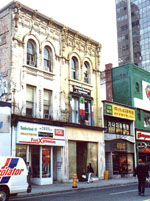 What gives the Bly Markis case its unique poignancy is the late Ms. Markis herself. And that’s where the strikingly beautiful and even well-dressed young woman I saw near Yonge and Bloor years ago, squatting on the sidewalk and begging for change, comes rushing back to me.
What gives the Bly Markis case its unique poignancy is the late Ms. Markis herself. And that’s where the strikingly beautiful and even well-dressed young woman I saw near Yonge and Bloor years ago, squatting on the sidewalk and begging for change, comes rushing back to me.
Back then my friends and I had approached the lady, and asked if she was all right (as we also inevitably gave her some change). She was embarrassed, and said she didn’t know how she had landed in the mess she was in. But that’s where she was, and she said she was fine. Up close, her face had something of the grimy look that people who live on the street acquire. But she was still nicely made up, and wearing smart and even expensive clothes. Even as her face told of anguish and sorrow, it seemed radiant and almost cheerful too.
 Bly Markis in the spring of 2007, it turns out, was some kind of cultural descendant of this lady on the streets from years ago. (Or so it is bound to strike me.) All the early press reports told us was that Ms. Markis “did not work in the Xerox building or any other nearby office towers,” and that her “parents live in the GTA [Greater Toronto Area] and Markis was their only child.” The photograph of her that police distributed – and that quickly appeared in the press and online – did not suggest anything like a 33-year-old homeless lady. But then further media reports made clear that she “had fallen on tough times in recent years and become a street person.”
Bly Markis in the spring of 2007, it turns out, was some kind of cultural descendant of this lady on the streets from years ago. (Or so it is bound to strike me.) All the early press reports told us was that Ms. Markis “did not work in the Xerox building or any other nearby office towers,” and that her “parents live in the GTA [Greater Toronto Area] and Markis was their only child.” The photograph of her that police distributed – and that quickly appeared in the press and online – did not suggest anything like a 33-year-old homeless lady. But then further media reports made clear that she “had fallen on tough times in recent years and become a street person.”
Bly Markis, local journalists soon discovered, was well known among street life support people in midtown Toronto. “Friends called her California,” because at “one time the tall, sunny-looking blond worked there as massage therapist in Ventura County after growing up in North York.” Ms. Markis fell on hard times when she came back but she was trying hard to get her life together.” Along with her GTA parents, she also had “relatives in California but … she had messed up enough times with her family’ to burn bridges.”
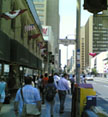 More than a few people apparently admired Ms. Markis, even in her troubled state. Some of her friends gathered on Monday, April 30 “at the Sanctuary, a centre” near Yonge and Bloor “that assists the homeless.”
More than a few people apparently admired Ms. Markis, even in her troubled state. Some of her friends gathered on Monday, April 30 “at the Sanctuary, a centre” near Yonge and Bloor “that assists the homeless.”
Bly Markis “had just finished three weeks’ probation after spending time in jail on drug charges, said street nurse Thea Prescod … She’d wear clothes she picked up from drop-ins,” said Prescod. She had this amazing gift to make it work. She looked like she got (an outfit) off a runway ‘ … In her ever-changing shoulder bags, Markis would carry a change of clothes, a brush and makeup, said Prescod … Markis spent her nights sleeping in a protected nook of the west wall of the … Sanctuary …”
 CBC News reported that those “who knew the 33-year-old mourned her Monday at a place she had frequented – the Sanctuary, a faith-based centre … that helps the homeless … California was beautiful. She was tall and thin and had long, reddish-blonde hair,’ recalled street pastor Patrick Sullivan. She was sweet and gentle and was just a very special person.'”
CBC News reported that those “who knew the 33-year-old mourned her Monday at a place she had frequented – the Sanctuary, a faith-based centre … that helps the homeless … California was beautiful. She was tall and thin and had long, reddish-blonde hair,’ recalled street pastor Patrick Sullivan. She was sweet and gentle and was just a very special person.'”
A University of Toronto graduate student wrote on his blog that the impact of Ms. Markis’ death for him went “well beyond the fact that” it “occurred two short blocks from my apartment. In fact, I knew the victim … a woman who I had met several times in my weekly street outreach walk that I have been participating in for the past year through Lazarus Rising and Sanctuary Ministries … I knew her only as California’. She was sincere and polite. She was pretty, and had a nice laugh. She was one of a few people I’ve met on the street who have taught me that you can maintain your dignity and keep a sense of joy in life in spite of the greatest challenges. She was the kind of person that I think anyone would like to have as a friend.”
The Harper crime agenda …
 On Thursday, April 26, just two days before Bly Markis was murdered in “an underground stairwell at Yonge and Bloor streets,” Canada’s Conservative prime minister, Stephen Harper, had “delivered a kickoff speech” on his minority government’s crime agenda, in the GTA edge city of Thornhill – west of Yonge Street, and many miles north of Bloor.
On Thursday, April 26, just two days before Bly Markis was murdered in “an underground stairwell at Yonge and Bloor streets,” Canada’s Conservative prime minister, Stephen Harper, had “delivered a kickoff speech” on his minority government’s crime agenda, in the GTA edge city of Thornhill – west of Yonge Street, and many miles north of Bloor.
As explained in the Globe and Mail: “Reported crime rates have generally fallen over the past 15 years. In his speech, however, Mr. Harper remarked on how crime has risen since he was a boy in the 1960s … Even if Canada’s crime rates are low by international standards, they are still very high by our own historical standards,’ Mr. Harper told an awards dinner for the York Regional Police Force … When I was a boy growing up in Toronto, we knew nothing of street gangs or crack houses. And gun crime was almost unheard of. That began to change in the 1960s. And during the next three decades, the violent-crime rate in this country more than tripled.'”
 The Globe and Mail went on: “While it’s true that reported crime rates are far higher than when Mr. Harper, born in 1959, was a child, he didn’t mention that they have been declining relatively steadily since 1992 … There was a dramatic increase in the 1960s and 1970s in most of the Western world, which … has never been adequately explained, University of Toronto criminologist Anthony Doob said.” In Canada crime rates “peaked in the early 1990s, and then drifted downward,’ he said … That’s especially true of the overall crime rate, which fell almost 25 per cent from 10,342 crime incidents per 100,000 people in 1991 to 7,761 in 2005.”
The Globe and Mail went on: “While it’s true that reported crime rates are far higher than when Mr. Harper, born in 1959, was a child, he didn’t mention that they have been declining relatively steadily since 1992 … There was a dramatic increase in the 1960s and 1970s in most of the Western world, which … has never been adequately explained, University of Toronto criminologist Anthony Doob said.” In Canada crime rates “peaked in the early 1990s, and then drifted downward,’ he said … That’s especially true of the overall crime rate, which fell almost 25 per cent from 10,342 crime incidents per 100,000 people in 1991 to 7,761 in 2005.”
No doubt, because Bly Markis was a homeless person, her very sad fate will not seem as unsettling to the great majority of us who are not homeless – and are thus unlikely to find ourselves in the circumstances associated with Ms. Markis’ murder. This is not like the case of the innocent teenage girl who was killed by a stray bullet, during a gunfight near a downtown Toronto record store on Yonge Street, on Boxing Day 2005 – less than a month before the January 23, 2006 election that gave Mr. Harper’s Conservatives their present slender minority government in Ottawa (with some 36% of the cross-Canada popular vote).
 On the other hand, if the Boxing Day 2005 shootings did help bring Stephen Harper’s Conservatives to office in the 2006 election, it wasn’t because they so alarmed the people who actually live in the City of Toronto. Mr. Harper’s Conservatives currently have no seats in Toronto proper at all. (And Mr. Harper himself has now spent most of his adult life in Calgary, Alberta – and lately the kinder and gentler Canadian federal capital of Ottawa, of course.)
On the other hand, if the Boxing Day 2005 shootings did help bring Stephen Harper’s Conservatives to office in the 2006 election, it wasn’t because they so alarmed the people who actually live in the City of Toronto. Mr. Harper’s Conservatives currently have no seats in Toronto proper at all. (And Mr. Harper himself has now spent most of his adult life in Calgary, Alberta – and lately the kinder and gentler Canadian federal capital of Ottawa, of course.)
As the Globe and Mail has also reported, a wider and more genuinely troubling “summer of the gun’ that hit Toronto in 2005 attracted national attention to crime and especially gun crimes, and all political parties promised tougher action in the last election … But the near doubling of gun homicides in the city in 2005 – to 52 from 27 the previous year – was followed by a drop to 29 in 2006, roughly the same number as in each year from 2001 to 2004.”
No more “Toronto the Good”?
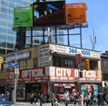 Like Stephen Harper, I grew up in Toronto in an earlier era. And in my case it was, alas, as long ago as the 1950s. I’d say that was a more innocent time than today. But I don’t know that I’d entirely agree with Mr. Harper’s pronouncement that “when I was a boy growing up in Toronto, we knew nothing of street gangs or crack houses. And gun crime was almost unheard of. That began to change in the 1960s.”
Like Stephen Harper, I grew up in Toronto in an earlier era. And in my case it was, alas, as long ago as the 1950s. I’d say that was a more innocent time than today. But I don’t know that I’d entirely agree with Mr. Harper’s pronouncement that “when I was a boy growing up in Toronto, we knew nothing of street gangs or crack houses. And gun crime was almost unheard of. That began to change in the 1960s.”
Certainly, so far as I can remember, there were no crack houses – though I wouldn’t say from my own necessarily limited and aging observations that Toronto is exactly swimming in crack houses today. But the great schoolyard enthusiasm when I grew up (in the Vaughan Road and St. Clair area, for those who may know where that is) was the adventures of the bank-robbing Boyd Gang, and their struggles with the police.
 Of course, the Boyd Gang is no doubt not quite what Mr. Harper means when he talks about “street gangs” and urges that “gun crime was almost unheard of.” Gun crime does seem to me something that is more in the air than it used to be, and this is a troubling trend. (The Boyd Gang certainly had guns. But it never occurred to me when I was growing up that the likes of the Boyd Gang might ever actually shoot someone like me. The Boxing Day shootings of 2005 were alarming because they did bring this kind of thought home.)
Of course, the Boyd Gang is no doubt not quite what Mr. Harper means when he talks about “street gangs” and urges that “gun crime was almost unheard of.” Gun crime does seem to me something that is more in the air than it used to be, and this is a troubling trend. (The Boyd Gang certainly had guns. But it never occurred to me when I was growing up that the likes of the Boyd Gang might ever actually shoot someone like me. The Boxing Day shootings of 2005 were alarming because they did bring this kind of thought home.)
At the same time, things are being done by way of public policy in Toronto to address the problems that lie behind the more troubling sides of the local crime scene. Various events surrounding the case of Bly Markis in late April and early May 2007 seem to bring this point home – even if they have finally not proved of much use to Ms. Markis herself. To me you need to bring both perhaps somewhat stiffer attitudes to law and order and more aggressive social policy to bear on the problems of crime in the city today. Mr. Harper’s federal Conservatives, like Mike Harris’s provincial Conservatives here in Ontario a few years back, seem to focus far too much on just the law and order side of the ledger – which might even make things worse.
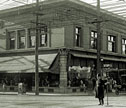 Besides, I wouldn’t say that I suddenly felt less safe in Toronto during the 1960s and 1970s – or otherwise seriously noticed that some earlier age of “peace, order, and good government” (as Canada’s Constitution Act 1867 says) suddenly “began to change in the 1960s” (as Mr. Harper puts it). I still feel pretty safe in virtually all of the city that I’m ever anywhere near myself.
Besides, I wouldn’t say that I suddenly felt less safe in Toronto during the 1960s and 1970s – or otherwise seriously noticed that some earlier age of “peace, order, and good government” (as Canada’s Constitution Act 1867 says) suddenly “began to change in the 1960s” (as Mr. Harper puts it). I still feel pretty safe in virtually all of the city that I’m ever anywhere near myself.
In the end Toronto the Good (from the title of a local book first published in 1898) has always had its rough edges, as strange as this may seem from some points of view. (Read, e.g., Morley Callaghan’s 1920s book on the city, Strange Fugitive, or Michael Ondaatje’s much more recent book about the city in the 1920s, In the Skin of a Lion. Or the expatriate British historian Goldwin Smith’s complaints about the “boy problem” [i.e. “street gangs”?] in the Toronto of the 1890s, in his book on Canada and the Canadian Question.)
 It is no doubt very important for public policy to keep working at smoothing these rough edges off, in whatever forms they arise as one age leads to the next. Yet as the case of Bly Markis also seems to remind us, sometimes even quite beautiful women want to pursue and even cultivate the rough edges of the city, for their own complicated reasons. And sometimes these rough edges hurt them very badly – just by chance, but the chances are much greater if you play this way.
It is no doubt very important for public policy to keep working at smoothing these rough edges off, in whatever forms they arise as one age leads to the next. Yet as the case of Bly Markis also seems to remind us, sometimes even quite beautiful women want to pursue and even cultivate the rough edges of the city, for their own complicated reasons. And sometimes these rough edges hurt them very badly – just by chance, but the chances are much greater if you play this way.
The video surveillance may have helped police solve the case (or allegedly solve at this stage of course). But it didn’t finally prevent Ms. Markis’ murder. And it is not altogether easy to see how any other kind of public (or private) policy could have done much better. Various people and support networks were trying to help Ms. Markis, and she was trying to help herself. Her alleged killer has the kind of relatives who “helped convince the suspect to turn himself in.” And yet the 33-year-old “beautiful … tall and thin … long, reddish-blonde-hair” lady is now dead all the same. That is what finally seems so very sad about the whole thing. And it is probably not a sadness that Stephen Harper, or any other federal politician, can really do very much to relieve.

